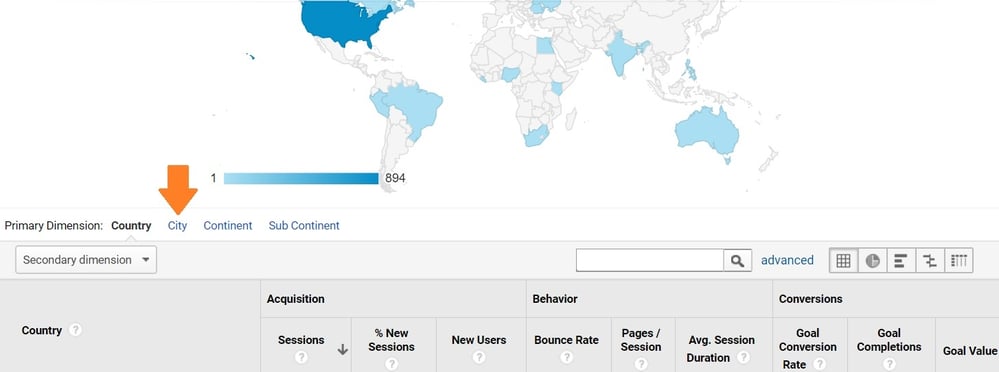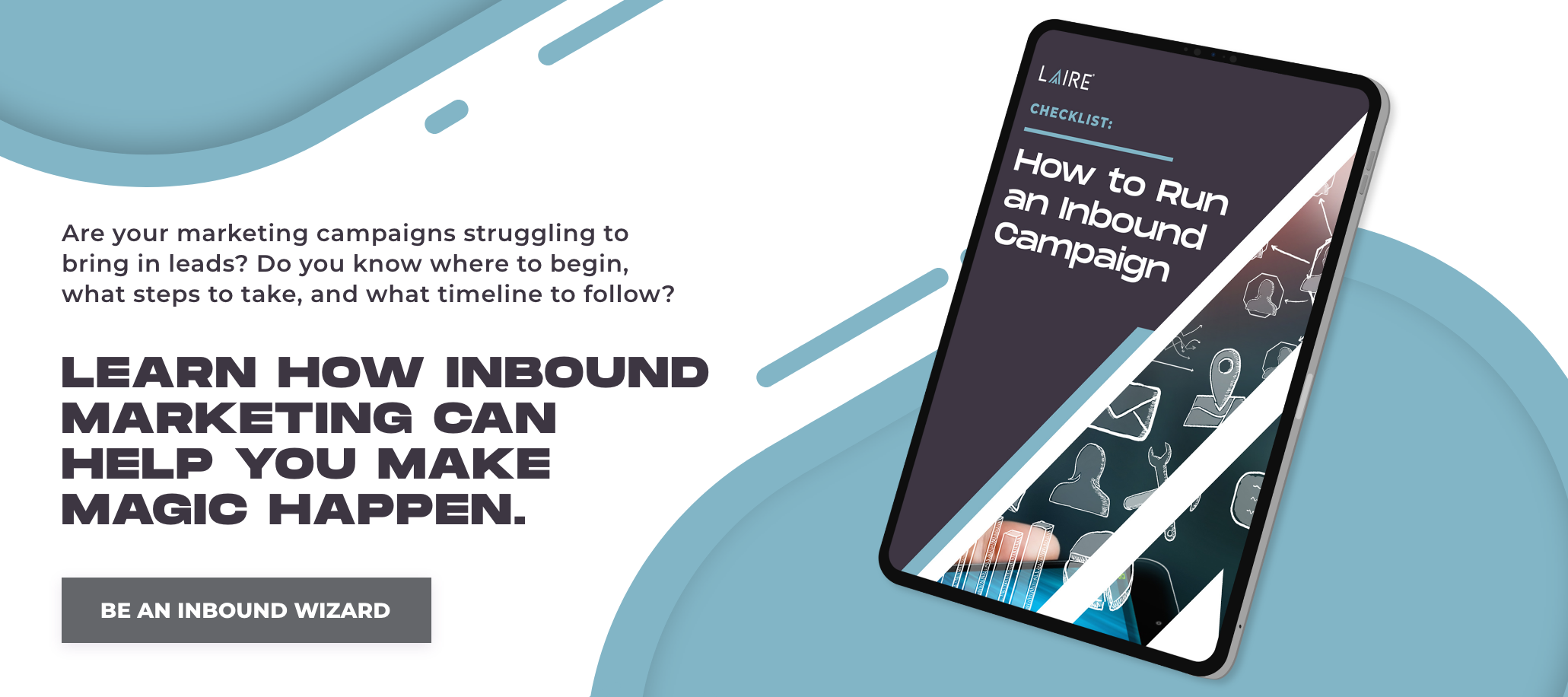Do you know where your best buyer persona is geographically located? Does their location play a part in their likelihood to spend money with you? If so, are you using geographical information to assist in targeting that buyer with content and digital advertising?
We can help you determine where your personas are. In this feature on Google Analytics, we’re going to help you interpret the geographic data to strategically adjust your inbound marketing strategy.
Discovering Relevant Geographic Data About Web Visitors
Once you’re logged into your Google Analytics, navigate to Audience → Geo → Location. From this screen, you can then choose how granular to dive into the data.
If your business relies on location for selling or delivering products or services, you’ll likely want to focus on the smallest geographic targets available. This requires you to click City from the menu just under the map.
If your business does not rely on local selling, you will need to decide whether the state-by-state information is relevant or if the Country-level is more pertinent to you.
The default view is already set to Country. However, if you want to see the state-by-state information you’ll need to click through the United States in the table. A new view will open to see the traffic data from each state.
What Geographic Data is Most Important in Analytics?
There is value to all of the geographic data in analytics. But for the sake of making adjustments to your marketing strategy, there are a few analytic reporting options you should look at first.
If you already know your best target locations:
- Stay at the level of targeting that is most important to your business. For instance, if you only serve local clients, stay at the city level and start by looking at your list in order by user volume, which is the default view. Are your most targeted cities at the top? Are any important target cities not sending many visitors to your site? A few things to consider:

If you are not getting web traffic from a city you want visitors from, ask yourself if your target buyer persona lives or works in this city.
If they live in the city in question, you may not see traffic from that city grow, but you might see an increase in web traffic from the nearest urban center instead. Buying and researching online often happens at work during office hours.
If your target audience works in the city in question, then adjust your marketing strategy to improve the number of visitors from this area. How should you do it?
- Create a hyper-targeted Facebook, Google Search, or another digital ad campaign to get noticed in that city.
- Create content on your site about that location. This could be in the form of a Service Area location page, a local case study or project feature, or a blog with specific and useful information for people who live in that city.
- Include the city name and other pertinent local information in content to more easily be found by your buyer persona.
- Next, look at your top target location to ensure there is quality traffic. Are buyers engaging with your site (avg. session duration, bounce rate, and pages per session)? Are potential customers converting? If either of these statistics is not satisfactory, consider more A/B testing on your landing pages while adding more locally relevant content.
Need a refresher on Google Analytics lingo? Check out our Getting Started with Google Analytics blog here.
If you are looking to learn more about your best buyer persona:
Learning more about your buyer persona, including where they live and work, is important in helping you with other marketing initiatives, such as ads and direct mail.
To determine where your best buyer personas live and work, sort your geographical data set by Goal Conversion Rate so that the locations with the most conversions are at the top. When you see the numbers, you’ll know right away where your current best targets are as far as reaction and likelihood to convert.
If there are some key target locations that are under-performing, take a look at the volume of traffic coming from that location, and make sure there have been enough visits to result in a conversion. If the site visits are not significant, consider new campaigns to drive web traffic from this location to your website.
Also, look at the messaging on the landing pages, ads, and other content for that target. If it is not relevant, make adjustments. Sometimes it is as simple as adding the name of the city, state, or country in the ad copy to convince people you are the right choice for them.
Location-Based Marketing Matters
Despite the world becoming smaller thanks to technology, there are many businesses you visit every day that depend on some form of location-based marketing and advertising. In fact, large global organizations create a variety of marketing campaigns for different states and countries. This is especially true when offers and promotions are different based on location.
Similar to how different target customers have various pain points, locations need varying offers. Each geo-target may need a different message, and some may have stronger buyer readiness than others. Location continues to matter, so make sure you're thinking about your online marketing strategy from a location standpoint too!
This blog was originally published on April 10th, 2018 and updated on March 12th, 2021 for accuracy.


